Back in 2022, a paper came out describing two new scorpion species. It made headlines, but not just because of the new species: at the time two of the authors – Prakrit Jain and Harper Forbes – were in high school. News outlets like The Guardian, NPR, and the Los Angeles Times covered the story of Jain, Forbes, and their colleague Lauren Esposito: all were more interested in the unlikely research trio than in the scorpions themselves.
Prakrit was recently in the news again for taking the first photos, along with Harper and wildlife photographer Vishal Subramanyan, of the Mt. Lyell shrew, a cryptic mammal species living in the Eastern Sierras of California. His Instagram and iNaturalist pages are filled with incredible photographs of not just shy shrews, but also fantastical nudibranchs, spiky springtails, and of course, unusual scorpions.
I had been wanting to interview Prakrit for some time, and recently had the opportunity to talk with him over email about his work, the future of arachnology, and his thoughts on scorpion conservation. Some answers and questions have been lightly edited for clarity.
1. How did you get here – studying scorpions, finding shrews, and photographing bizarre nudibranchs – today Prakrit?
I have been interested in wildlife for as long as I can remember. As was the case for many people, my interest began as I explored local county parks and nature preserves with my family. Observing the birds, plants, and especially insects, I developed an appreciation for nature and for wild species. When visiting these preserves, I learned from docents at visitor centers or on guided hikes. Often, they would invite me to return for events such as bioblitzes, thereby introducing me to professional researchers and the citizen-science community. Through this process, I began to learn more about insects, arachnids, and nudibranchs. The researchers I met at these events frequently suggested that I attempt independent research projects, something that guided me towards the research field I am in today. At the same time, I began to get more interested in photography. Interacting with a number of highly skilled and accomplished wildlife photographers, I learned about the importance of photography for outreach and research. I was inspired to take detailed photographs myself, and over time, I in particular developed skills in standardized scientific photography on black or white backgrounds. This is what prompted my more recent project photographing California’s nudibranchs. Additionally, during a mammalogy class in university recently, I realized how poorly-photographed much of our small mammal fauna was in California. For most species and subspecies, few or no high quality photographs exist. I thought my specific experience with white-background photography could be quite useful to work towards remedying this situation, which directed me towards recent shrew photography projects.
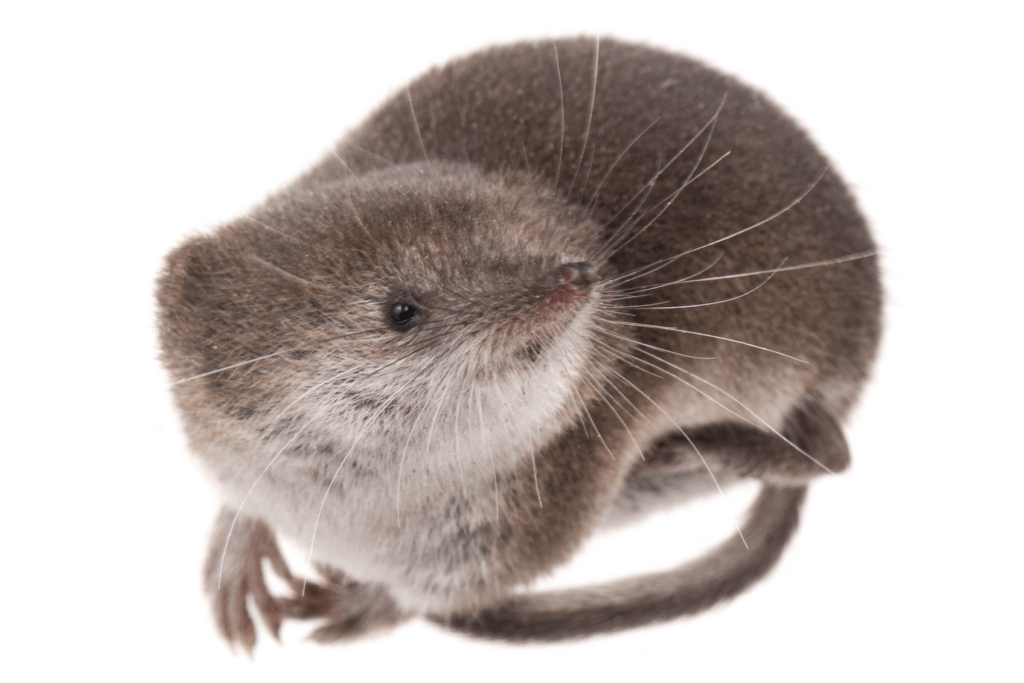
Sorex vagrans, the vagrant shrew, photographed on Jain’s recent expedition to find the Mt. Lyell shrew. Prakrit Jain.
2. What got you interested in invertebrates generally and scorpions specifically?
My interest in invertebrates really started with insects. Some of the first scientists I interacted with were entomologists, and they taught me how to search for insects, identify common families, and collect specimens. Around the same time I was also getting interested in tidepooling, through which I met many other researchers and enthusiasts specializing in nudibranchs. My fascination with the invertebrate world grew as I learned more about how poorly-known many of these animals were. I became interested in scorpions after a few experiences finding them with UV lights. At one event in particular, I met California Academy of Sciences researcher Dr. Lauren Esposito who taught me many details about scorpion biology. Fascinated, I began to learn more about scorpions, and I am now working in her lab.
3. Why did you decide to pursue arachnology professionally?
Arachnids are exceptionally poorly-known organisms despite their fascinating biology. They range from predators to herbivores to parasites, come in a vast array of sizes, are found in nearly every terrestrial environment, and have a variety of unique morphologies. I find them to be a fascinating study system for what I am most interested in: ecology, biogeography, and the evolutionary process. That being said, I would argue most invertebrate groups are similar in this respect, so my interest didn’t necessarily have to be in arachnids in particular. Nearly any sufficiently diverse group has fascinating insights to study and plenty of room remaining for novel findings.
My fascination with the invertebrate world grew as I learned more about how poorly-known many of these animals were.
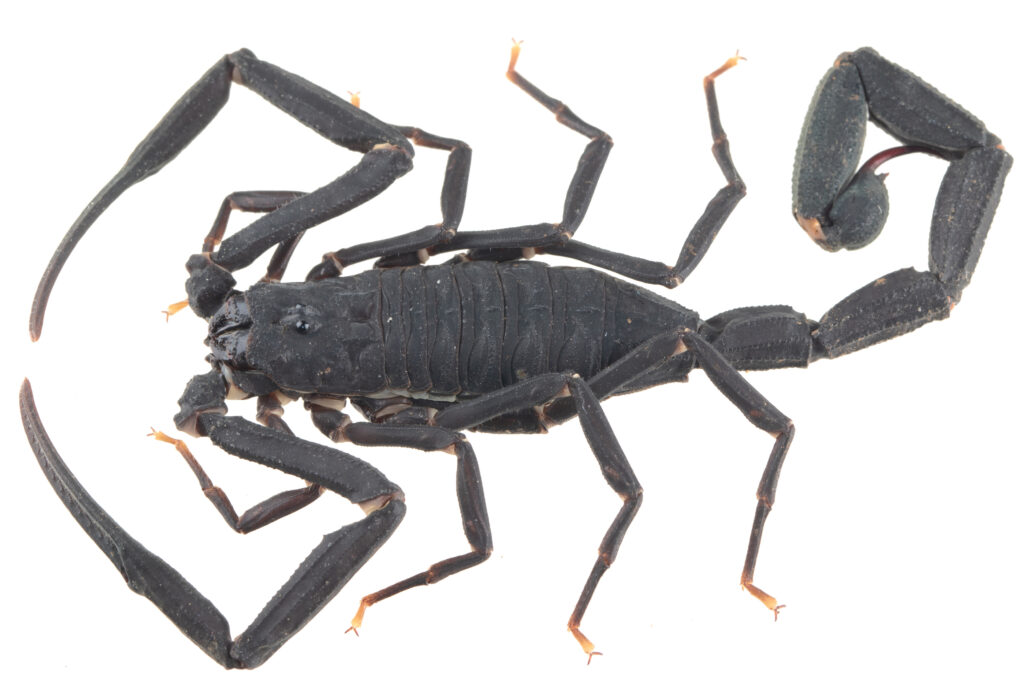
Tityus choco, a scorpion species from Colombia. Prakrit Jain.
4. What projects are you working on right now?
My primary project is a revision of the genus Paruroctonus: something I have been working on for some years now. I intend to redescribe all known species, update their diagnostics, and clarify any unclear species boundaries. I also am working towards describing the large number of undescribed species present in the group. Ultimately I’m hoping to do some more detailed work on these scorpions’ ecology, biogeography and the underlying processes driving their evolution.
As far as other scorpion groups go, I’m currently looking at Kovarikia in southern California, Graemeloweus in northern California and Superstitionia across the southwestern states. So far I’ve photographed nearly all of California’s scorpion species (remaining are Catalinia thompsoni from the Northern Channel Islands, Uroctonus grahami from caves near Lake Shasta, and Wernerius spicatus from the Little Bernardino Mountains). I plan to use these in a sort of field guide, probably one that looks at California ecosystems and scorpions simultaneously. However, that is something to be released following the descriptions of some of the more obvious undescribed species to prevent confusion.
In terms of photography projects, I’m working on photographing xystodesmid, platydesmid, and polyzoniid millipedes, as well as nudibranchs generally, in California on standard black backgrounds. I haven’t decided what I plan to use these photos for, however. Along with the folks at Morromico and Ex-Situ Project, I’ve been collaborating on the Gulf of Tribuga biodiversity survey in northwest Colombia. This is an initiative to photograph and inventory the tremendous and exceptionally poorly known diversity in this region, an area that was rendered largely inaccessible to researchers due to conflict for many years. I was invited to help with arachnids, and I’ve photographed around 200 species so far. I’m uploading these onto iNaturalist, and I would appreciate any identification help.
Outside of invertebrates, I’m currently working on a few more small mammal projects: a photography project on Arborimus pomo, and a research project on Sorex in the high Sierra Nevada looking specifically at population densities and the effects of introduced fish.

Brachycybe picta, a platydesmid millipede species from Northern California. Prakrit Jain.
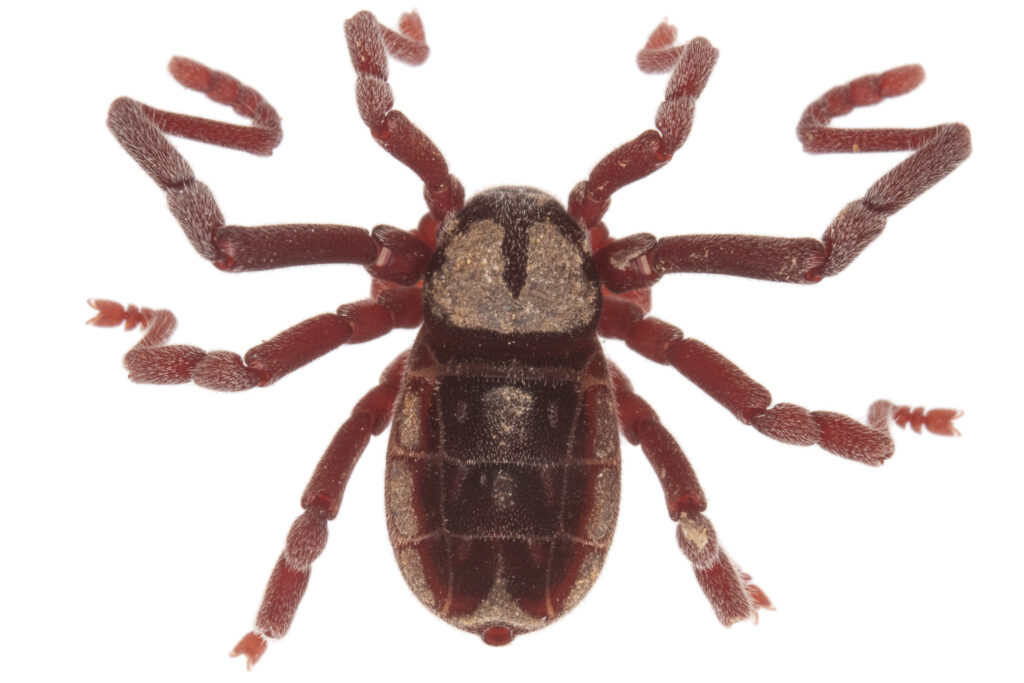
Cryptocellus sp., a ricinulei arachnid species from Colombia. Prakrit Jain.

A constellation of Californian nudibranch species. Prakrit Jain.
5. On Instagram you recently posted some incredible pictures of a Malaysian springtail species. Can you tell us a little bit about that trip?
Like tropical regions globally, Malaysian Borneo has exceptional biodiversity but has seen little work on most of its invertebrate fauna. As is the case around the world, fossorial species have been particularly neglected. On an observational permit from the two conservation areas I visited, I did some preliminary sampling for interesting fossorial arthropods. The rather exceptional springtail Denisimeria martyni was perhaps the invertebrate highlight (at least following some of the more recent taxonomic opinions) as my photographs represented not only the first images of D. martyni but the first of the subfamily Uchidanurinae as a whole. Among my other significant finds were a few Palpigradi and Schizomida (as far as what I’ve been able to find, representing the 2nd and 4th records from Borneo respectively), a polyxenid millipede (I have been unable to find any other records from the island), and a Conothele halonoproctid trapdoor spider (seemingly only the third record of the family on Borneo). I also have photographs of a fair number of other millipedes and arachnids, but I have not identified them so far.
Some of my other favorite finds from the trip were the reptiles and amphibians. In particular, finding a Dragon Snake (Xenodermus javanicus) in the wild was a dream come true. I was also very excited to observe a Bornean Tree-Hole frog (Metaphrynella sundana) using a pitcher plant (Nepenthes ampullaria) as a calling chamber, a behavior I do not believe has been recorded before. As far as other finds go, I will continue to upload them on iNaturalist whenever I get a chance.
However, more than anything else, experience is the best teacher. Get out in the field if you can, and if not, try to contact others who have to learn from their observations.
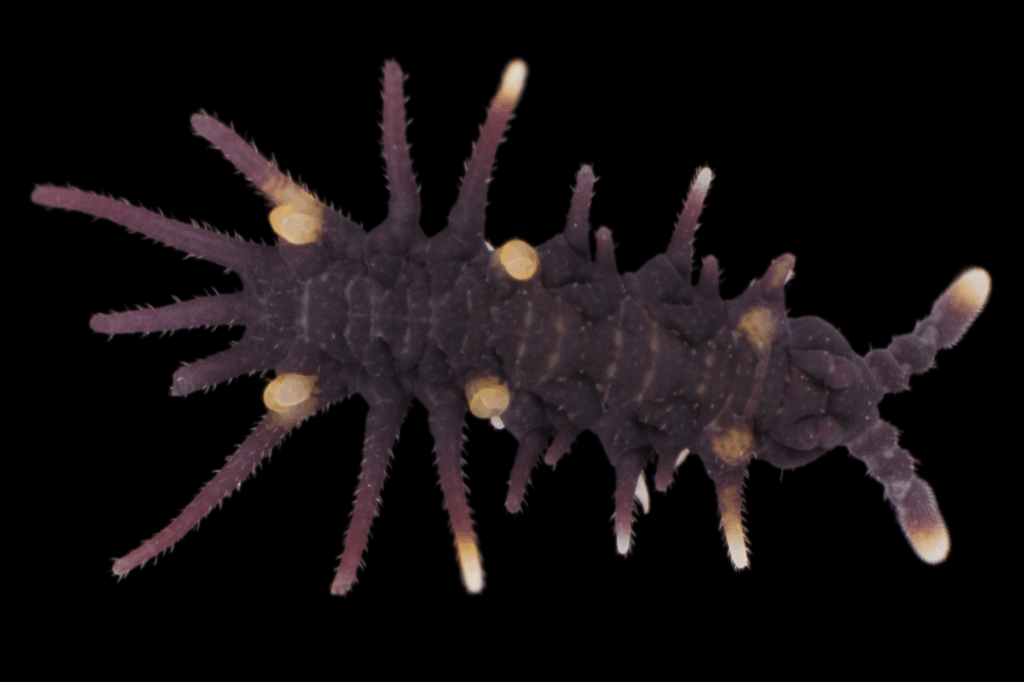
Denisimeria martyni, a rare and very spiky springtail species from Malaysia. Prakrit Jain.
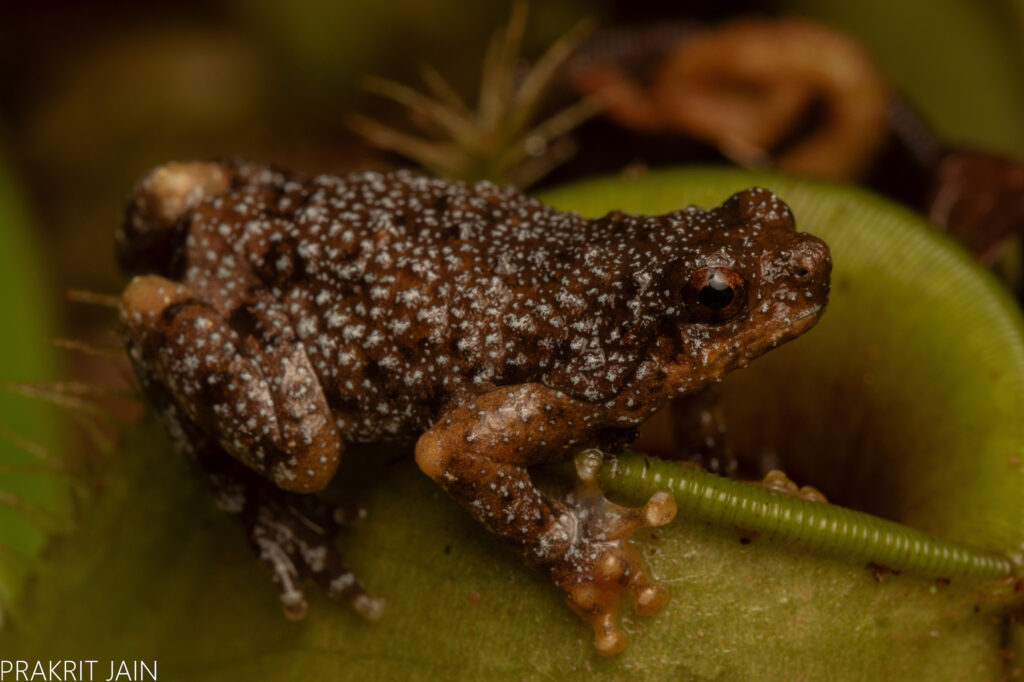
Metaphrynella sundana, the Bornean Tree-Hole frog, using a pitcher plant (Nepenthes ampullaria) as a calling chamber. Prakrit Jain.
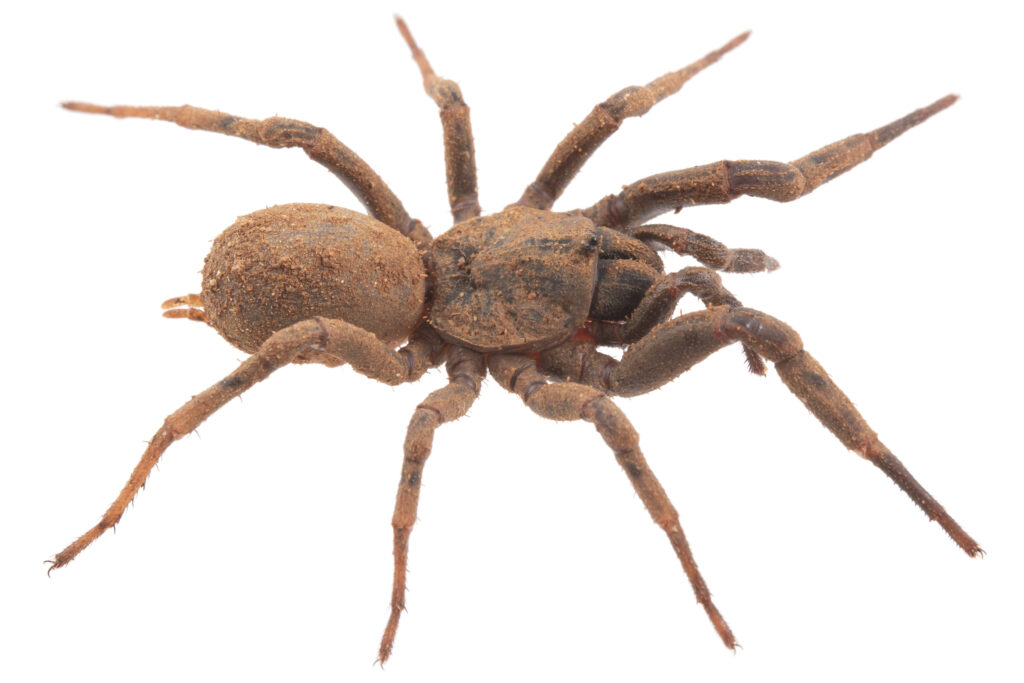
Paratropis sp., a mygalomorph spider from Colombia. Prakrit Jain.
6. As someone who published his first research while in high school, do you have any recommendations for other young researchers looking to do the same? Is there anything you wish you had known beforehand?
Conducting research in high-school can be a challenge, but with modern citizen-science databases, digitized literature, and online access to professionals, I think it has never been easier. I do have a few recommendations.
It takes a while to get familiar with most fields. Learning how to search the literature and access databases is key. Sci-hub will likely come in handy, as will resources such as iNaturalist and GBIF. However, more than anything else, experience is the best teacher. Get out in the field if you can, and if not, try to contact others who have to learn from their observations. For instance, I have realized a fair bit of the literature on scorpions in California is inaccurate, but this information is often not available publicly anywhere, at least thus far. Speaking to experts can clarify things.
Researchers are often very willing to help passionate students. Writing cold emails has worked very well for me, and I highly recommend it to get in touch with professionals. Navigating the academic process can be intimidating and confusing, so having mentorship is key.
Coming up with a feasible study at a high-school level can be difficult due to challenges in accessing specialized equipment, difficulty with permitting, limited familiarity with statistical methods, and a lack of experience in research design. However, observational field ecology studies often require minimal equipment and can be done easily on BLM or USFS land. These may involve looking at phenology, symbiotic interactions, reproductive behavior, habitat selection, competition, or any other aspect of ecology. There are also an enormous number of relatively simple analyses that can be conducted on citizen-science data such as looking at predation, variation, phenology, and population trends. More involved experimental studies can be interesting, but often require more careful consideration regarding feasibility.
One thing I wish I knew beforehand was how time consuming and confusing the publication process can be. I recommend publishing in peer-reviewed journals, but it will serve students well to work with professionals to navigate the process.
…I hope that invertebrate keepers try to select captive-bred animals or capture from the wild on their own rather than supporting commercial collection and sale.

Corallus annulatus (ringed tree boa) eating a Ceratopipra mentalis (Red-capped manakin) in Colombia. Prakrit Jain.
7. On that topic, you and Harper Forbes note in your description of Paruroctonus conclusus that this species is at high risk of extinction due to its small native habitat. Have there been any developments on its conservation status?
Two of the three species we described together, Paruroctonus conclusus and P. tulare, warrant considerable concern. The former has an exceptionally narrow range (as far as we have been able to tell thus far, less than a square kilometer on the southern margin of Koehn Lake), all of which is zoned for industrial solar development. Paruroctonus tulare is a bit better off as it is known from a number of localities in the San Joaquin Valley, but its distribution is highly fragmented and threats such as groundwater overuse, a warming climate, habitat degradation due to grazing and nonnative species, and pesticide or other chemical contamination from nearby agricultural land, are serious concerns. At the moment we are working on endangered species petitions to hopefully protect critical habitat, but the process is slow. Despite its small distribution, the third species we described, Paruroctonus soda, is actually relatively secure as its distribution falls within Carrizo Plain National Monument.
8. You know my background is in keeping and breeding scorpions, and the majority of scorpions in captivity are still wild caught. In your opinion, should we be concerned about the collection of popular species like Hadrurus arizonensis for the pet trade, or even of range-restricted species like P. conclusus?
Like those of many invertebrates, scorpion populations are typically high and can be quite resilient to small scale collection. I don’t think most people are likely to cause an impact to populations by collecting for personal use except for potentially the most range-restricted species such as Paruroctonus conclusus, Graemeloweus maidu, or Uroctonus grahami (all of which I think should be legally protected for reasons beyond collection).
Commercial exploitation, however, is a different story entirely. I can very easily see how collection for sale could have detrimental impacts, especially for rare or range restricted species. If something like Paruroctonus conclusus became popular on the market, I expect population declines would follow. Even for common species, I don’t think collection for the purpose of distribution is something we should support. This kind of thing gets out of hand very quickly with exceptionally detrimental impacts—see, for instance, the impacts unregulated take had on even abundant reptile species in Nevada. Note that scorpions were implicated as well—legal take of scorpions was used as a cover for illegal take of reptiles.
Aside from population impacts, the cruelty of the entire enterprise, from animals consistently dying of exposure in abandoned traps to dying in transport or at the hands of inept keepers, makes such activities difficult to justify. As such, I hope that invertebrate keepers try to select captive-bred animals or capture from the wild on their own rather than supporting commercial collection and sale.
To a degree, or at least in certain fields, one could argue that citizen-science has already become the predominant method of discovery.
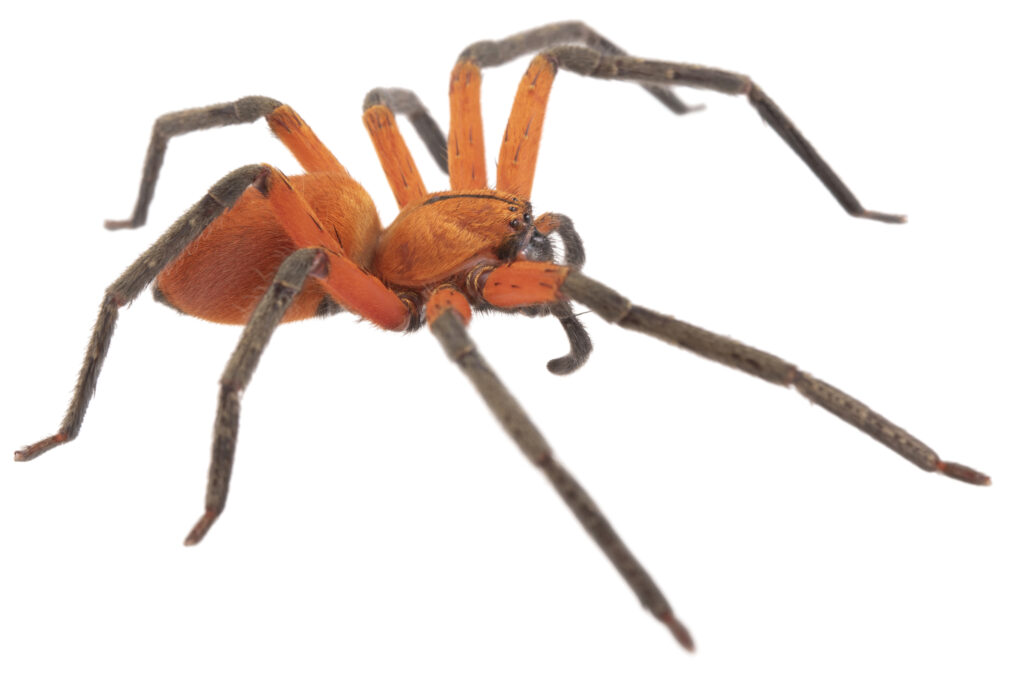
Sadala rufa, a vibrant huntsman spider species from Colombia. Prakrit Jain.
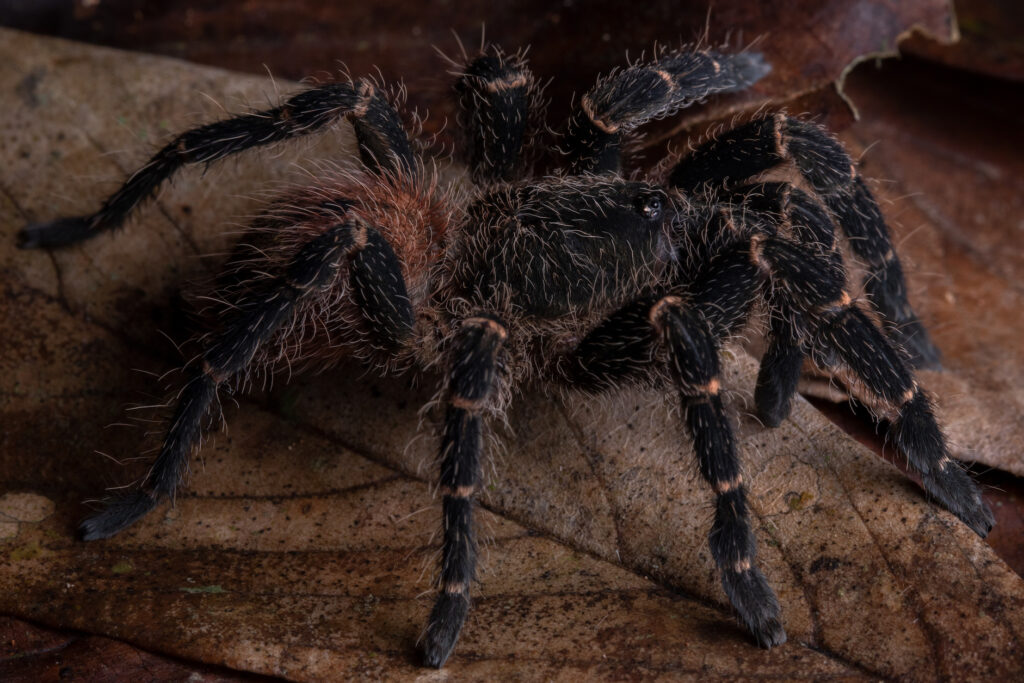
Neischnocolus mecana, a dwarf tarantula species from Colombia. Prakrit Jain.
9. A lot of your work could be characterized as, or has been based on the findings of, citizen science. When you look to the future of science, and especially of smaller, harder-to-fund fields like arachnology, do you see citizen science as ever becoming the predominant method of discovery and/or research?
To a degree, or at least in certain fields, one could argue that citizen-science has already become the predominant method of discovery. While it may struggle to replace surveys of particularly cryptic species, taxa that are especially challenging to capture, organisms that are very small, or groups that require dissection and/or molecular tools to identify, for many (perhaps even most) species citizen-science records are consistently useful. For California scorpions for instance, citizen-science discoveries far outpace what I am able to find myself—likely by an order of magnitude—and are therefore probably the most important tool I have for identifying new species.
This trend continues for many other analyses. To take an example, the iNaturalist project Snake Predation Records has compiled over 10,000 records of snakes predating other organisms, creating a global dataset of snake diets likely far exceeding what would be practical to generate through traditional methods such as fieldwork, literature searches, and dissection of museum specimens.
iNaturalist occasionally puts out news highlights with a list of important discoveries that came out that month based on citizen-science records. Here’s one from December 2024, for instance, that includes a number of range extensions, new species discoveries, conservation biology insights, and more.
Citizen-science records also democratize access to biodiversity data far more than museum specimens, or even efforts to digitize museum collections, are able to. This opens up possibilities for institutionally unaffiliated individuals, especially those outside of western countries, to contribute to biodiversity research in ways that may have been historically impractical.
10. Do you have a favorite scorpion species (or a shortlist)?
I’m partial to some of the most exceptional obligate troglobites such as Vietbocap sp., Alacran sp., and Akrav israchanani. The former is my favorite scorpion I have seen in the wild. I hope a live population of the latter will finally be uncovered someday.
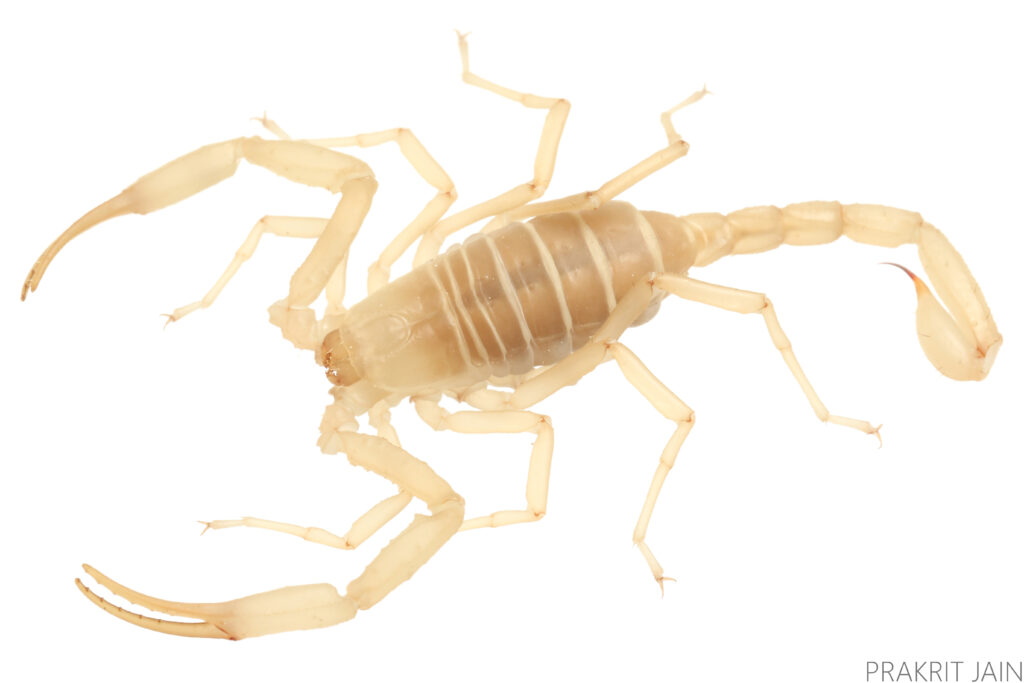
Vietbocap thienduongensis, a troglobiontic scorpion from Vietnam. Prakrit Jain.
A big thank-you to Prakrit for taking the time to answer my questions and for sharing some of his awesome photos. If you want to check out more of Prakrit’s work, you can find him on Instagram and on iNaturalist.
Arthroverts.org is all about seeking the lost till all is made new. For invertebrate biodiversity news and more interviews like this one, subscribe to arthroverts.org.
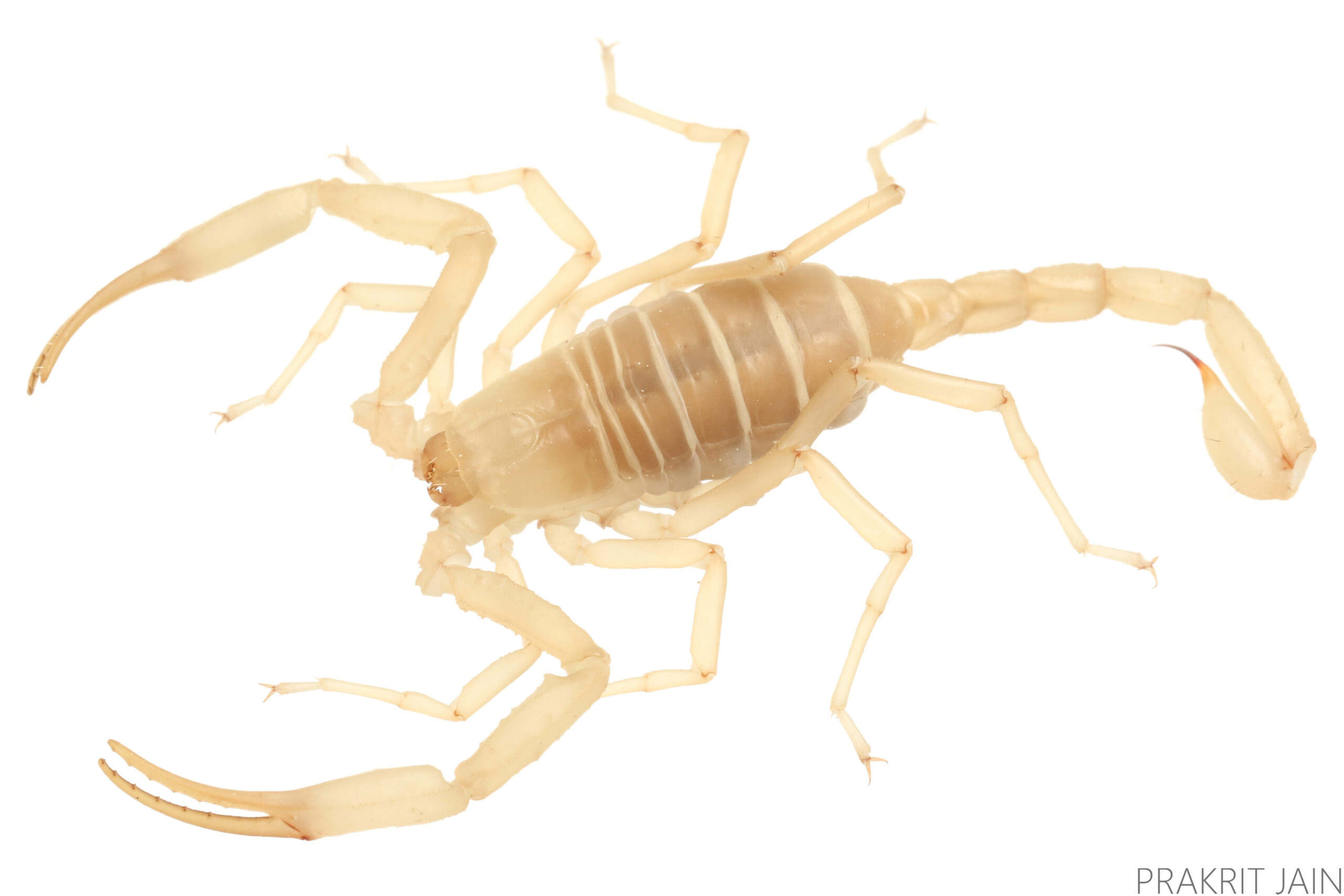
Leave a Reply